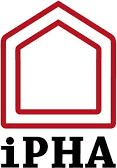By David White
 New York City is currently planning changes to its energy code, including the energy performance requirements for city-owned buildings. NYPH, Urban Green, and the Mayor’s Office all agree that to meet the city’s carbon footprint reduction goals, we must make drastic cuts in building energy use. This means adopting a code for all buildings that requires such performance levels.
New York City is currently planning changes to its energy code, including the energy performance requirements for city-owned buildings. NYPH, Urban Green, and the Mayor’s Office all agree that to meet the city’s carbon footprint reduction goals, we must make drastic cuts in building energy use. This means adopting a code for all buildings that requires such performance levels.
However, this is not the most critical aspect of the code-to-be. A successful code doesn’t just state the intended outcome, but rather lays a clear, achievable path to its realization for everyone. An energy code for our city must leverage the motives and expertise of the various players in our design and construction process.
It would be nice if code could somehow mandate limits on energy use, but it can’t. By the time consumption can be measured to verify compliance, it’s typically too late to fix the building without prohibitive cost. It’s also only fair to excuse the designers and builders from some influences on energy use that are out of their hands. Therefore code mandates certain aspects of construction, with the expectation that those will save energy (and many of them do).
The problem with this, as all of us making Passive Houses know, is that the reality of making an energy-efficient building, from form making and fenestration, to detailing, to construction administration and commissioning, is so complex that it’s impractical to enforce or even codify the required expertise. Despite 160 pages of length, the code does not ensure good performance even for compliant buildings. Enclosure infiltration, thermal bridging, duct leakage, all manner of mechanical plant design/construction errors, and far too many other important issues to reasonably document, are not adequately mandated by code, yet they run roughshod over NYC buildings. Worse, those of us working on a higher standard often face code measures that fail to improve our work, and in some cases hinder it.
On the other hand, there is one aspect of building design that is a suitable proxy for good performance: a small heating and cooling plant. If code limits heating and cooling system size, and code is strictly enforced, then the building will either use little energy, or it will have comfort complaints. Therefore the design team is strongly motivated to make the building perform as intended.
This is the vision of Chris Benedict and Henry Gifford’s “Perfect Energy Code.” In their proposal, the Department of Buildings will withhold a construction permit if the rated energy inputs for heating and cooling systems exceed code limits. Note that this is input, not output, so it encourages efficient equipment.
DOB ruling will be based on forms that are already part of DOB filing, with one minor change. Heating input for combustion equipment is in section 4 on form PW1C, or for electrically driven equipment, a new entry in Section 5 on Form PW4. Cooling plant input is also from the same new entry on PW4. To see if the heating or cooling plant meets code, each entry is divided by the construction floor area, from section 8f of form PW1. In other words, the code official needs less than five minutes to determine whether the equipment meets size limits, so compliance is all but guaranteed. Later, site inspection verifies that installed equipment matches the filing, or C of O is withheld (this is already standard procedure).
Under this code, the design team takes steps previously unheard of: they ensure the thermal and air barriers are designed and installed to match the engineer’s load calculations; they verify that ducts are sized, sealed, and balanced to deliver the right amount of air to each space, and that oversized pumps don’t force valves open; they see to it that lighting, including “decorative” lighting, does not overload the cooling system; they take care that the building works in harmony with occupant behavior.
Importantly, they draw on their professional experience to address those problems as they see fit. They may look to the Passive House standard for support, but in fairness they will ultimately rely on their own professional judgment. The code will do its job, which is to reasonably ensure that all NYC buildings are energy efficient, and the design and construction professionals will do theirs, which is to figure out how.
This requirement may not adequately address some aspects of building energy use, such as domestic hot water; such measures from the current code may serve to do so. However, it is critical that equipment size limits replace at least a large portion of the current code, in order to ease enforcement.
As for metrics, the city should set an equipment size limit equivalent to Passive House for all city-owned buildings. If the city demands that its people make more efficient buildings, it has a responsibility to lead the way. It is uniquely positioned to do so: each city project has a site engineer present every day from start to finish of construction. This engineer can catch and cost-effectively remedy errors in critical areas, such as air barrier sequencing.
Buildings in general should be held to a more relaxed standard, so that earnest effort at current levels of expertise achieves a high rate of compliance. The city will advance our collective practice through its own exemplary buildings. As it observes the level of compliance for the general public over time, it will adjust equipment size limits accordingly.
If the NYC energy code mandates nothing other than limits on heating and cooling equipment size, it will empower the DOB to ensure compliance for 100% of projects, leverage the talents of our building professionals to move our culture forward, significantly cut the soft costs of building construction, and result in a deep reduction in carbon footprint for our great city. This is an opportunity not to be missed.
——–
David White is a NYPH Member, a leading Passive House Consultant and owner of Right Environments, a full-service building energy efficiency consulting business.

























